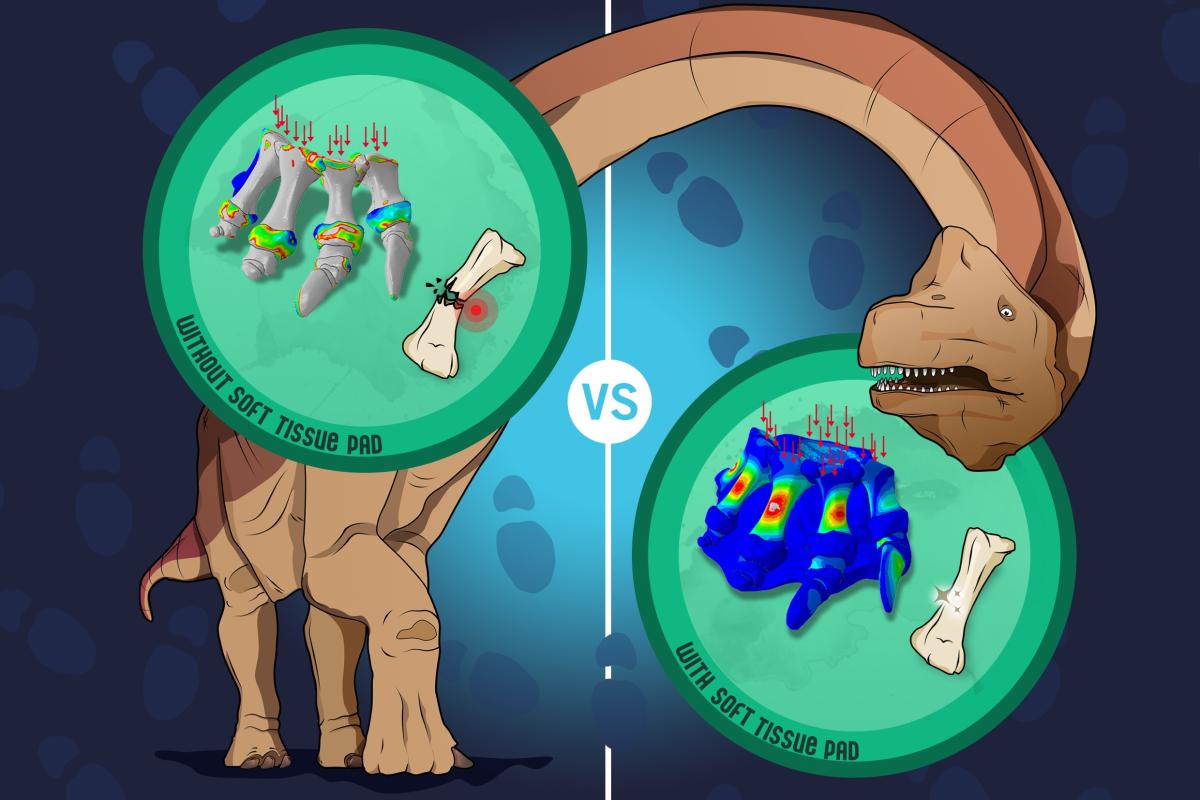Researchers have cracked the mystery of how sauropod dinosaurs were able to carry their gigantic bodies on land. Dr. Andréas Jannel, now a postdoctoral researcher at the Museum für Naturkunde Berlin, conducted the research as part of his doctoral studies at the University of Queensland's Dinosaur Lab. The University of Queensland and Monash University-led research team found that the sauropods' hind feet had a soft tissue pad beneath the 'heel' that cushioned the foot to absorb their immense weight.
The team used 3D modelling and engineering methods to digitally reconstruct and test the function of the foot bones of various sauropods.
"We provide for the first time biomechanical evidence to support the long-suspected idea that a soft tissue pad – particularly on the hind feet – played a critical role in reducing locomotor pressures and stress on the bones," Dr. Jannel said. "The idea that these huge creatures were able to support their own weight on land is breathtaking."
Sauropods were the largest land animals to inhabit the Earth for more than 100 million years. They were initially thought to have been semi-aquatic, their massive weight supported by the buoyancy of water – a theory disproved by the discovery of sauropod tracks in terrestrial sediments in the mid-20th century.
"In pop culture – think Jurassic Park or Walking with Dinosaurs – these behemoths are often depicted with almost cylindrical, thick, elephant-like feet," said Dr. Panagiotopoulou from Monash University. "But in terms of skeletal structure, elephants stand on their tiptoe on all four feet, while sauropods have different foot configurations on their front and hind feet. The front feet of sauropods are more columnar, while they have more wedge-shaped heels at the back, supported by a large soft tissue pad."
Prof. Steve Salisbury of the University of Queensland explains that this is because sauropods and elephants have different evolutionary origins. "Elephants belong to an ancient order of mammals called proboscideans, which appeared in Africa about 60 million years ago as small, inconspicuous herbivores." In contrast, sauropods, whose ancestors first appeared 230 million years ago, are more closely related to birds. They were agile, bipedal herbivores. Only later in their evolution did they walk on all fours. "Crucially, the transition to the largest land animals to populate the Earth apparently involved the adaptation of a heel pad," Salisbury said.
The researchers now plan to use 3D modelling and engineering methods to possibly make further discoveries. "I would like to apply a similar method to whole sauropod dinosaur limbs and include additional soft tissues, such as muscles, that are rarely preserved in fossils," Dr. Jannel says. "I have also planned to study the limbs and feet of other prehistoric animals, such as early reptiles from the Bromacker locality in Germany. This should allow us to answer several questions about the biomechanics of extinct animals and better understand their environmental adaptations, movements and lifestyles."
Published in Jannel et.al. Softening the steps to gigantism in sauropod dinosaurs through the evolution of a pedal pad, Science Advances, DOI: 10.1126/sciadv.abm8280
